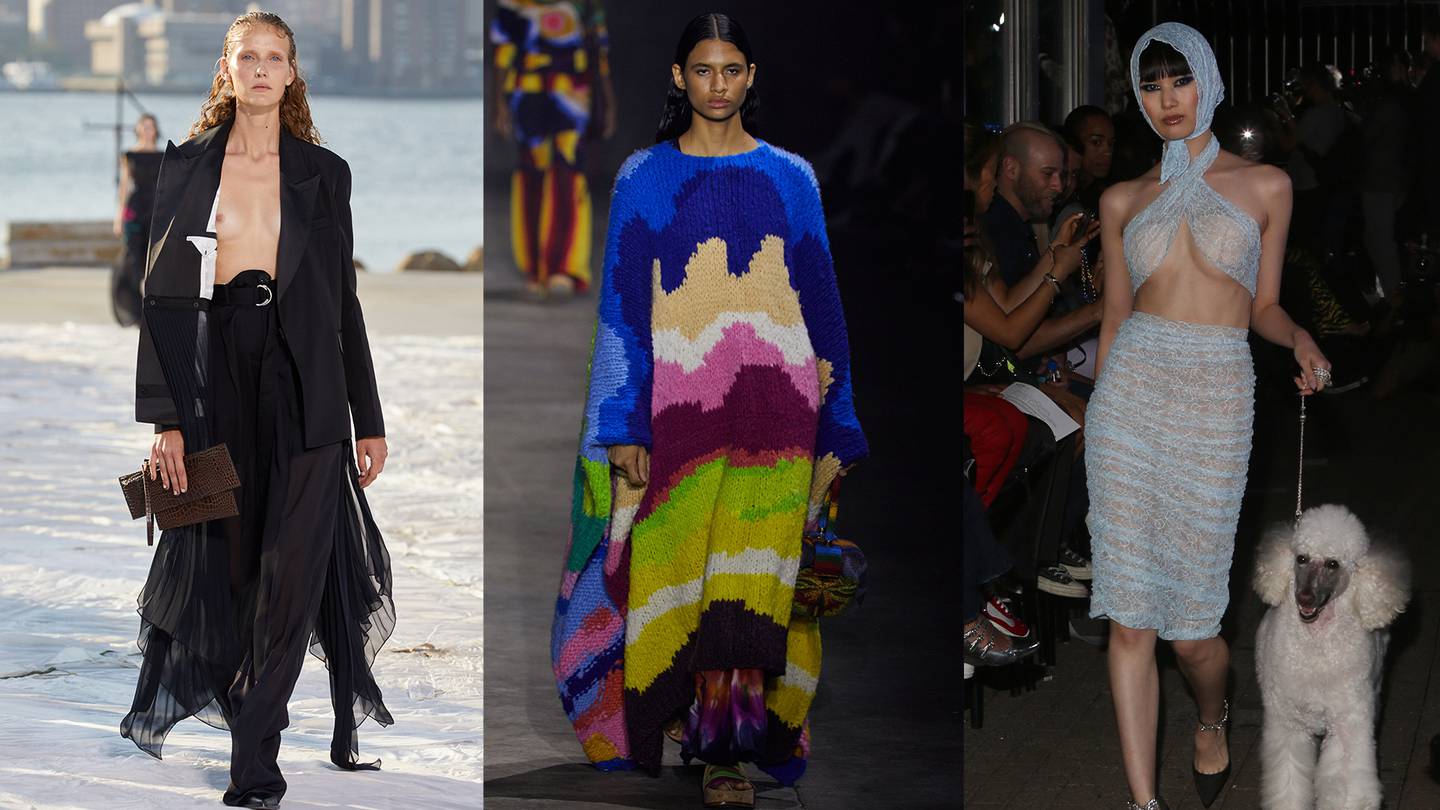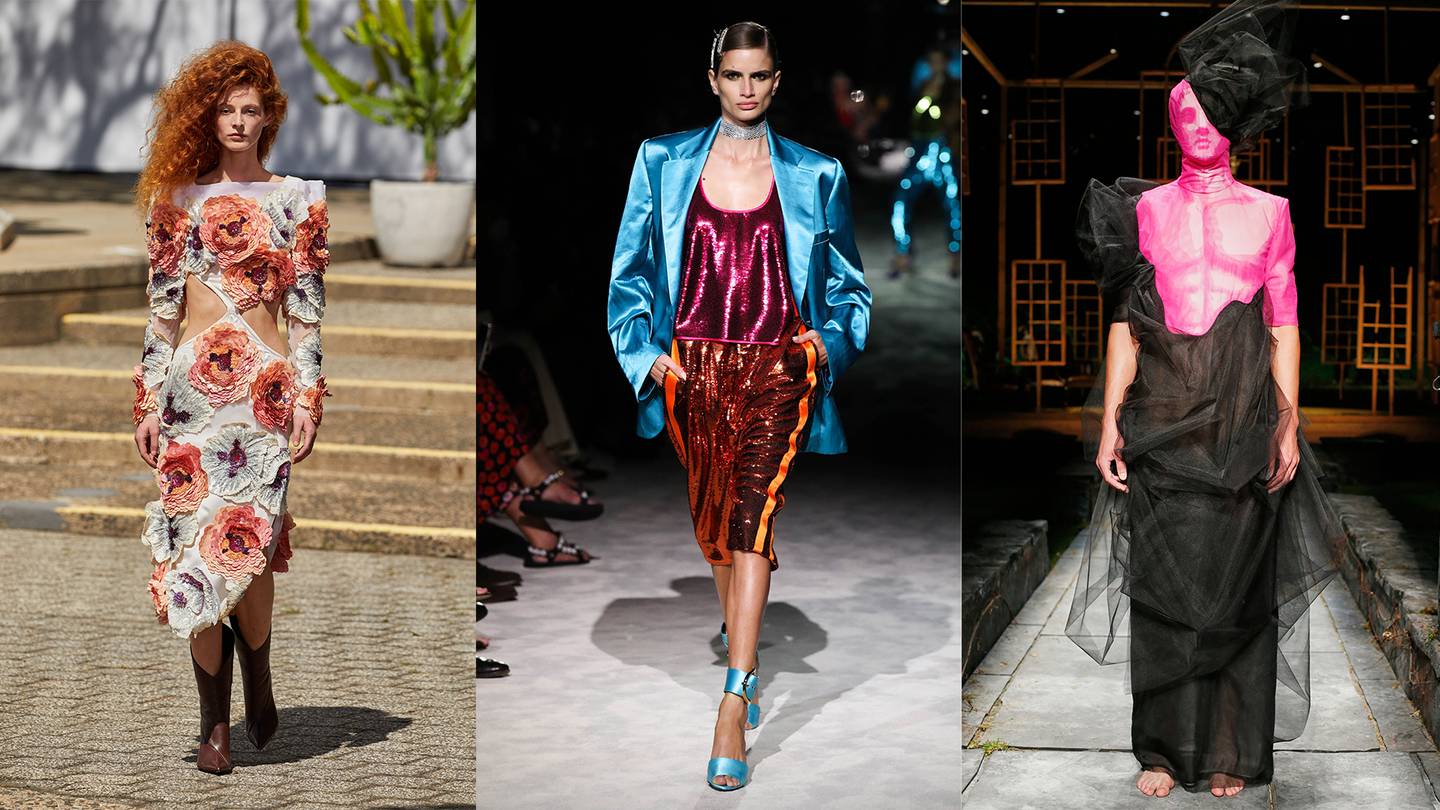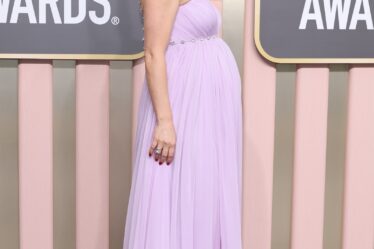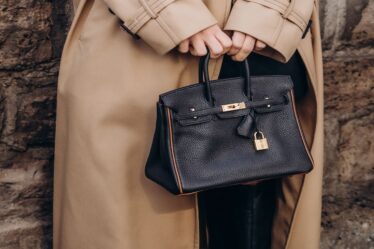
Fourteen days after the Texas law eviscerating reproductive rights took effect, Peter Dundas marked the first day of New York Fashion Week by sending out a joyful, liberated collection that argued fiercely for a woman’s right to be as wild and free as she damn well pleases. Presented on a rooftop overlooking the East River, the clothes were a collaboration with contemporary label Revolve, which means the prices will be friendly to young people who like to dress up, go out and get tipsy and frisky. To achieve that laudable goal, there were leather shorts paired with lacerated lace tops, fringed flapper affairs with low necklines and high hems, and a bevy of artfully slashed golden dresses.
Same river, different borough: later that day, Peter Do got us to Brooklyn in service of an entirely other sensibility. Do, who is 30 years old and immigrated from Vietnam to Philadelphia when he was 14, is the great hope of New York fashion — his soft, grown-up tailoring generating at least some buzz in this largely buzz-free season. There was a quiet authority to his fine pleats and four-piece ensembles; an incredible white coat hosted a congregation of crystals. Despite the haut bourgeois trappings, one model’s errant breast peeked out from a perfectly tailored jacket, whose back was enlivened with an embroidered lily-of-the-valley. At the end of the show, Do emerged with his entire team, an acknowledgment of the group effort that goes into fashion collections.
Elsewhere this week, feminism manifested in surprising ways. At Batsheva, it brandished an Easter-egg lavender Pierrot collar and a surfeit of peachy-keen ruffles. The models sported wigs big enough for the most transgressive ‘60s pop singer, but don’t be fooled by the ironic deployment of baby-doll silhouettes — the woman who wears this is not a powerless puffball in a puffed sleeve. Karen Elson and Sarah Sophie Flicker were among the activists in the audience at the Upper East Side institution Serendipity, fortifying themselves with that restaurant’s famous frozen hot chocolate.
No chocolate but an actual lunch awaited attendees at Gabriela Hearst, back on the river in a warehouse in far-flung Greenpoint. The collection was created in collaboration with members of the Navajo Nation, and the result includes lovely dip-dyed tank dresses and rainbow-hued ponchos, for those who long for a refined and highly wearable interpretation of the Woodstock-ian garments treasured by their mothers, or maybe even their grandmothers.
If the early days of the week lacked a certain exuberance — the music invariably veering between atonal and dolorous — the torpor was vanquished at Imitation of Christ, Tara Subkoff’s line of mostly repurposed vintage garments. A Buddhist monk was ensconced centerstage at St. Marks Church in the Bowery, and around him, a spectacular cast of performer-models danced as if they had just been let out of a cage, so buoyant were their leaps. Many of the clothes, as ever, were reworked vintage and therefore one of a kind. The results — patchwork coats; deconstructed tutus — looked like exquisite versions of what the East Village denizens just outside the church doors were actually wearing.
Nor could the heaving masses thronging to the LaQuan Smith show be accused of a lack of enthusiasm. What seemed like a cast of thousands were stuffed into the lobby of the Empire State Building, which was bathed for the occasion in scarlet light; the designer’s name illuminated one art deco wall. Up on the observation deck, we were treated to a collection that was a relatively soberer, and welcome, advance on the line’s trademark naughty catsuits. One model, clad in a transparent baby blue halter paired with an almost-demure matching skirt, walked a poodle on a lead. “The dog is all!” a rapturous young lady was heard exclaiming over the din.

No canines, but a single-legged trouser was on tap at Rodarte, whose show took place in the courtyard of Westbeth, the artists’ housing complex in the West Village. If you do not wish to trap one limb in glittery fabric while the other roams free, you can opt for one the houses’ frocks, which seemed to get more beautiful with each passing model. Especially breathtaking was a white cut-out number festooned with bead-encrusted auburn blossoms, worn by a woman with cascades of russet hair, the very image of Elizabeth Siddal, the tragic muse who posed for the pre-Raphaelites over a century and a half ago.
You could just make out the beacons of light soaring up to the heavens, meant to commemorate the World Trade Center towers, from Little Island on the Hudson River, where Proenza Schouler held its show. It was a perfect night and if you are in need of a floaty, oversize Kool-Aid colored kaftan-dress these were on hand, as well as long shorts that devolved into a surfeit of fringe.
Shorts, similarly long but rendered in sequins and employing the most spectacular palette — neon olive! Radioactive heliotrope! Lascivious lime! — lit up the catwalk at Tom Ford’s deeply chic show at Lincoln Center. They were accompanied by slouchy satin trenches, sometimes semi-concealing the flicker of a silver brassiere or a shimmering tank. Assuming you are in a position to kick off the killer stilettos, a lot of these offerings appeared slouchy and comfy enough to withstand a long louche evening.
The set at Thom Browne was as riveting as the most elaborate Broadway production. Models disguised as topiary — mounds of gray roses with heads — were scattered around a fantastical garden in the centre of which was the frame of a house containing two characters in bustles. A voice-over intoned a tale of two lonely guys who lived in the place; whether this referred to the bustle-wearers or the two-winged fellows riding around on penny-farthings and wearing horse’s heads was anyone’s guess. The whole thing unfolded like a fever dream — pull any thread and the images and references spilled in all directions. As for the fashion, there was a long set of Browne’s classic grey suiting in many iterations, followed by a gallery of frothy, artfully wrought multi-hued dresses, including one person swathed in a black tulle confection who lingered for a while inside the house frame and then, for no discernable reason, collapsed. Dreams are like that.
But in dreams begin responsibilities: at Vaquera the glowering models clomped heavily down the runway — which in truth was not a catwalk at all, but Cortlandt Alley, a rough passageway off Canal Street. They were clad variously in a Day-Glo lace shirt paired with — hey look, another one-legged pant, a darling dress that might have been made from a fresh black trash bag (and I mean this as a complement) and an oversized pullover that read “Go Away Evil.”
If these women seemed to be in a rage, can you blame them? Despite the quirky charm of so many of their ensembles, they had every right to be angry — evil is stalking them, and their very lives are under siege.



